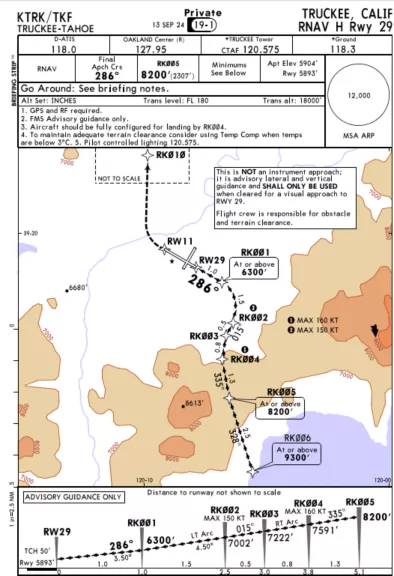by CJP Newsletters Editor Rob Finfrock
Flying a visual approach to the runway can introduce additional challenges to operational safety, especially when combined with surrounding terrain or encroaching airspace, or in nighttime conditions. However, technology already on most Citation flight decks might offer a solution.

Developed by Honeywell, the FMS-guided visual approach (or FGV approach) utilizes the aircraft’s existing flight management system to fly through a series of additional waypoints on a visual approach, either by hand-flying or coupled with the aircraft’s autopilot.
Earlier this year, I spoke with CJP’s own Charlie Precourt and Mark McIntyre, director of a large Part 91 flight operation, for an episode of NBAA’s “Flight Plan” podcast about this new capability.
“The nice thing about it is that once it’s loaded into your database, it can be loaded into the FMS, just like any other instrument approach,” Precourt said. “These charted visual approaches take you through a series of waypoints that makes it very predictable to get you to roll out onto a wings-level final above the stable approach gates. [That] takes a lot of the guesswork out of setting up a visual approach.”
Precourt further noted the benefits from FGV approaches as seen through data gathered through CJP’s flight operations quality assurance (FOQA) program.
“[We found that] anytime somebody was doing a downwind or a base entry and setting themselves up, they were repeatedly encountering high sync rates in the base to final turn,” he said. “And what we discovered when we looked deeper into it was people have a difficult time visualizing the required descent rates, spacing geometry, because they’re so variable.”
McIntyre’s operation helped establish one of the first available approaches, to Runway 35 at Jacqueline Cochran Regional Airport (TRM) in Thermal, CA.
“Landing on [Runway] 35, your pattern is constrained by very high terrain to the south, especially when flying a left downwind,” he said. “We often go in there at night. It’s a black hole approach. There are no approach lights… There’s high terrain to the south, and there’s no published instrument procedure that aligns you with 35.”
Company FOQA data revealed “inconsistent” performance and, especially worrying, unstabilized approaches to the runway. While the operation had created a “pseudo” guided visual approach to compensate, McIntyre noted their aircraft’s avionics “didn’t process it well … It gave us some aid but we didn’t have a high level of confidence with it.”
The first step toward an ultimate solution came during an operator conference held by their aircraft OEM, when McIntyre engaged with Honeywell representatives about creating an FGV approach. “They developed it in a very short time and we began flying it,” he said. “Our FOQA events went to zero. We fly a nice, constant final descent … It literally took all of the anxiety and sweat out of it.”
To date, Honeywell has published FGV approaches to 14 additional airports, with several more in development. Precourt noted Honeywell is accepting operator requests to add FGV approaches at other airports, including large commercial fields.
“And the other avionics providers are headed in that direction,” he added. “I see these as a big boon to safety for us.”
Click here to listen to the full episode, “Helpful Guidance for Challenging Visual Approaches.”